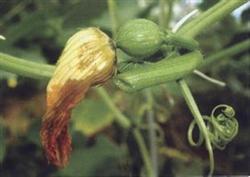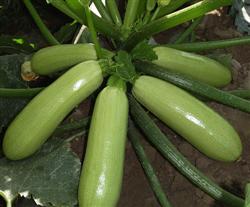Three measures to control the prosperity of zucchini

First of all, temperature management is the first element of prosperity control. The optimum temperature for summer squash growth and development is 18~22℃ in daytime and 8~10℃ at night. If the daytime temperature is higher than 25℃, the accumulation of photosynthetic products is less and the consumption is large, and the summer squash is easy to flourish. Therefore, in the case of high temperature in planting period of summer squash in autumn extension or winter, temperature control management should be carried out instead of raising temperature to promote planting. Temperature control measures are to strengthen ventilation, do not prematurely close the front face vent. Second, avoid excessive soil moisture. After planting and slowing down seedlings, zucchini management should focus on controlling water and promoting roots. If the soil is not too dry, do not rush to water before fruiting. Of course, if the plant is seriously withered due to lack of water, it should be watered with small amount of water to ensure the normal growth of the plant. It must not be flooded with large water to cause the plant to flourish. At the same time, the first water quantity after the root melon sits should not be too large, too large is easy to cause melons, and then lead to vigorous growth of plants. In order to promote the smooth progress of reproductive growth, small water can be used for irrigation. In addition, control nitrogen and supplement potassium in the later stage. After zucchini enters the fruiting period, it requires a large amount of potassium fertilizer, so it is necessary to pay attention to the use of high-potassium fertilizer when flushing fertilizer, and not to use excessive high-nitrogen fertilizer to avoid excessive nitrogen fertilizer and plant growth. Of course, if the zucchini is planted too early, the early temperature can also be adjusted with hormones, but it should not be used excessively, especially paclobutrazol. Generally, 5~7 days after the summer squash seedling, spray the plant with 15% paclobutrazol 1500 times, but do not spray the growth point alone to regulate the growth of the plant.
- Prev

The main reasons for the rotten flowers of zucchini
The main causes of zucchini rotten flowers are: Botrytis cinerea and physiological disorders (temperature drop, high humidity, hindered root development, etc.). In addition, bacteria can also infect the flowers, and in serious cases, white pus will flow out. At the beginning, the symptoms were as follows: the flowers showed wet rot in the form of water stains, and gray-black hairs appeared in the later stage. Some wet rotten flowers show pus (.
- Next

The base fertilizer of zucchini varies with different fertilizer.
In the middle and later stage of the growth of zucchini in solar greenhouse, due to poor indoor ventilation and light transmission, closed field, poor photosynthetic capacity, early senescence and low yield. In recent years, vegetable farmers in Dongkan Town, Binhai County, Jiangsu Province have explored a set of vine cultivation techniques, so that the growing period of zucchini can be extended from September of the first year to June of the following year, with a yield of 10,000 mu.
Related
- Where is it suitable to grow horseradish in China? it is expected to see the middle altitude horseradish in Alishan.
- How to prevent tomato virus disease reasonably? (Control methods included)
- Many people like to plant towel gourd on the balcony. What are the main points of this method and management?
- What crops can chili peppers be mixed with?
- Fertilization techniques and matters needing attention in Tomato
- What are the grafting techniques for peach seedlings in spring?
- Harm and control methods of root swelling disease of Chinese cabbage
- What are the pests of sweet potatoes? How to prevent and cure it?
- Symptoms, causes and Control methods of navel Rot in Tomato
- The cause of "Cucumber rotten bibcock" in Farmers' planting Cucumber and its Control Plan

